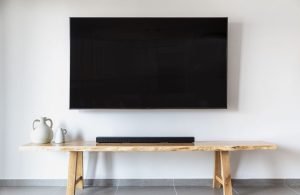Last Updated on October 30, 2025 by teamobn
When a room feels “almost there” but not quite complete, it’s usually the accessories doing the heavy lifting you’re missing—those distinctive touches that pull color, texture, light, and personality into a cohesive whole.
Before you start swapping furniture, consider how a few intentional updates can reshape perception and flow; even simple moves can change how open and finished a space feels. If you’re working with tight square footage, these smart design tweaks that make your home feel instantly larger set the stage — then the right accessories become the strategy that completes the room.
From statement lighting to mirrors, texture layers, and one bold focal piece, the following ideas show how small choices create a big, finished impact.
A room might have the right paint color, furniture, and layout, but without the right accessories, it can feel incomplete or flat. The good news is, you don’t need a full makeover – just a few bold, distinctive pieces to pull everything together. Here are nine ideas that prove one or two accessories can transform how a room looks and feels.
Contents
- 1 1. Make One Wall Do the Talking
- 2 2. Add a Standout Piece That Anchors the Space
- 3 3. Use Mirrors to Expand and Define
- 4 4. Light the Room Like It’s a Gallery
- 5 5. Give Life to the Corners
- 6 6. Mix Up Your Textures
- 7 7. Personal Touches That Aren’t Predictable
- 8 8. Add One Unexpected Color Pop
- 9 9. Use Scent as a Design Element
- 10 Final Thoughts
1. Make One Wall Do the Talking
Blank walls feel cold, but filling every inch with art can be overwhelming. The best solution is to go bold on just one wall and let it become the main feature.
- Choose one oversized piece that has color, contrast, or movement. A large canvas, framed textile, or geometric mural adds life without crowding the room.
- Add floating shelves with objects that pop. Think of plants, ceramic pieces, or collectibles that show personality.
- Use contrast in tone or texture to break up the wall from everything around it. Dark wood against a light wall or smooth metal against brick can shift the mood instantly.
- Create a photo wall of black and white images in various sized frames.
Wall-mounted accessories do more than fill empty space — they establish rhythm, sightlines, and balance. Pair a statement mirror with adjacent wall art to bounce light while guiding the eye, keeping frames and finishes in the same tonal family for cohesion.
If you’re building a gallery or mixing media like canvases, textiles, and sculptural pieces, scale is your best friend: anchor with one larger item, then cluster smaller works to create a deliberate visual hierarchy. Not sure where to start? This guide on how to mix and match wall art for a cohesive look helps you sync color, spacing, and frames so your wall reads curated — not crowded.
2. Add a Standout Piece That Anchors the Space
Every room benefits from something that catches your eye the second you walk in. A standout object can hold the whole space together.
- Incorporate something traditional, like a samurai sword, to add both character and visual impact. A well-crafted katana, for example, has a striking presence—its elegant form and clean lines make it a natural focal point when properly displayed.
- Place it where light hits naturally so it becomes part of the space instead of looking staged.
- Let that piece inspire other design choices, like the color of textiles or nearby shelving materials.

3. Use Mirrors to Expand and Define
Mirrors do more than reflect light. They change the feel of your room by creating space, repeating lines, and adding shape.
- Choose mirrors with unique frames like distressed wood, matte black, or irregular shapes. These don’t just reflect – they stand out.
- Position them across from windows to bounce light deeper into the room and make it feel larger.
- Group small mirrors asymmetrically instead of one big one if you want a playful or artistic look.
4. Light the Room Like It’s a Gallery
Lighting isn’t just functional. The right light adds character and changes how every surface looks.
- Use layered lighting with a mix of ceiling lights, table lamps, and floor lights to avoid dark corners.
- Try a statement lamp that acts as both a light source and a sculpture. Think of materials like blown glass or powder-coated steel.
- Add warm LEDs behind shelves or inside cabinets to subtly highlight items without drawing attention to the source.
5. Give Life to the Corners
Corners often get ignored, but when used right, they can be some of the most expressive parts of a room.
- Use tall plants to fill vertical space and bring organic movement to a static room.
- Place small chairs or stools with a textured throw or stack of books to turn a dead corner into a cozy spot.
- Install a corner shelf or hanging planter that adds dimension while keeping the floor clear.
6. Mix Up Your Textures
Too much of one material can make a space feel one-note. Mixing textures gives depth and keeps the eye moving.
- Blend soft and hard materials like wool with metal, or linen with concrete. This creates contrast and balance.
- Add a shag rug, knit throw, or leather pouf to soften a room that feels too flat.
- Use texture on unexpected items like lampshades, frames, or drawer handles to add surprise in small places.
7. Personal Touches That Aren’t Predictable
Accessories should say something about the person who lives in the room. But it doesn’t have to be the usual photos or word art.
- Display tools or equipment from your hobby as if they’re art. Think camera gear, musical instruments, or even old workshop tools.
- Use souvenirs in creative ways, like shadow boxes, mounted pieces, or grouped displays that feel curated, not cluttered.
- Create a small feature wall or shelf that holds 3-5 meaningful items that reflect your story. Keep it clean, intentional, and change it as your story grows.
8. Add One Unexpected Color Pop
Sometimes, one accessory in an unexpected color is all it takes to lift a space that feels too safe or monochrome.
- Use one bold-colored item like a bright yellow side table, a cobalt blue vase, or a rust-orange throw. It brings contrast and helps anchor your color scheme without going overboard.
- Add the color in a non-central spot like a corner shelf or the base of a lamp to make the room feel layered and intentional.
- Keep the surrounding tones neutral to let the pop really shine. It feels deliberate, not random, when the rest of the room plays a quieter role.
9. Use Scent as a Design Element
This one gets overlooked often, but scent can be just as impactful as visual design. It changes how people feel the moment they enter a room.
- Use a diffuser or candle in a scent that matches the vibe of the room. Something woody works for relaxed spaces, while citrus feels fresh and energetic. You can even make your own scented candles to create additional uniqueness!
- Pick accessories that double up like sculptural incense holders or minimalist oil diffusers. These blend seamlessly into your setup and still deliver atmosphere.
- Place scent strategically near entryways or seating areas to enhance the room’s mood without overpowering it.
Final Thoughts
The best rooms aren’t the ones filled with the most expensive furniture or elaborate layouts. They’re the ones where every item feels chosen with care. Distinctive accessories do more than decorate – they shape the feeling of your space. A mirror, a sword, a lamp, or even a piece of driftwood can turn an ordinary room into a place that feels fully yours.
Once you’ve identified the few distinctive accessories that pull your space together, mirrors for light, a sculptural lamp for character, a single bold color pop, round out the process with visual references to refine your choices. Browse curated looks and real-room examples to stress-test your palette, finishes, and scale.
For a quick mood-board shortcut, explore these wall decoration ideas to inspire your accessory choices and translate what you love into your own room: one focal piece, a cohesive frame story, and just enough texture to make everything feel intentional and complete.
Personalizing your space doesn’t have to mean buying more décor — curation beats accumulation. After you’ve layered in key accessories for balance and function, choose a few pieces that speak to your story and scale them intentionally. Gallery shelves, small vignette trays, or a single feature wall can showcase meaning without visual noise.
For a budget-friendly approach, try DIY art projects that add character without clutter; hand-painted canvases, framed textiles, or photo transfers let you tailor color, texture, and size to your room, so every accent feels deliberate rather than busy.
If you’re stuck on how to finish a room, don’t buy more furniture. Look for one object that does something bold. And remember, sometimes it’s that one distinctive piece that makes everything click into place.






